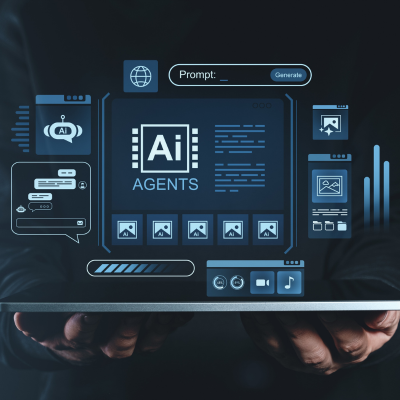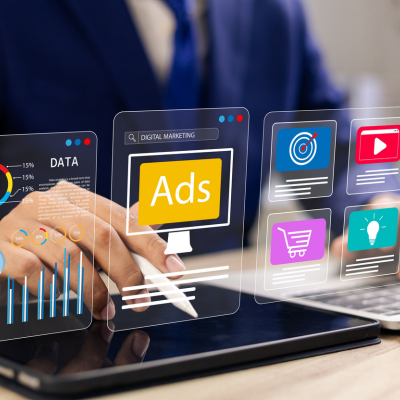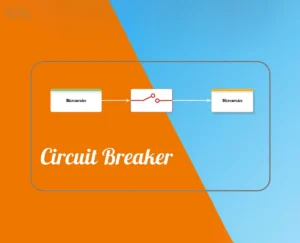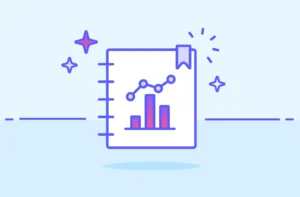In 2025, programmatic advertising is no longer simply automated—it’s intelligent, precise, and responsive in real time. Powered by AI and machine learning, smarter bidding strategies now redefine how marketers optimize budgets, personalize campaigns at scale, and maximize ROI. Understanding this transformation is essential for staying competitive in an evolving digital landscape where demand-side platforms (DSPs) and ad exchanges operate with unprecedented sophistication.
This article delves into the evolution of programmatic advertising 2025, highlights the latest tools and tactics, and offers actionable insights for mastering this dynamic field. Alongside, we spotlight how Amquest Education’s Digital Marketing and Artificial Intelligence course, based in Mumbai and accessible nationally online, delivers hands-on AI-powered learning with strong internship and placement support—preparing professionals to lead the future of digital marketing.
The Evolution of Programmatic Advertising
Programmatic advertising started as a method to automate the purchase and sale of ad impressions through real-time bidding (RTB), focusing initially on speed and scale to replace manual negotiations. By 2025, it has matured into a complex ecosystem where AI and machine learning enable predictive bidding, dynamic creative optimization, and automated budget allocation.
Key milestones include:
- Automated Bidding and Real-Time Bidding (RTB): Revolutionized ad buying with instantaneous auction-based transactions, improving efficiency and reach.
- Integration of AI and Machine Learning: Shifted bidding from reactive to predictive, analyzing vast data sets to forecast conversion probabilities and optimize bids.
- Cross-Channel Campaign Orchestration: Unified strategies across display ads, connected TV (CTV), audio, digital out-of-home (DOOH), and retail media.
- Privacy-First Architecture: Embraced first-party data and alternative ID solutions in response to cookie deprecation and tightening privacy regulations.
Today, programmatic advertising is a strategic, AI-powered discipline essential for digital marketing success, driven by data intelligence, privacy compliance, and automation.
Latest Features, Tools, and Trends in Programmatic Advertising 2025
AI-Powered Smarter Bidding and Predictive Strategies
AI revolutionizes bidding by evaluating millions of variables in real time to place optimal bids. This approach balances competitiveness with cost efficiency, reducing wasted spend and enhancing margins.
Benefits include:
- Efficient Spend Management: AI predicts clearing prices for impressions, minimizing overbidding while staying competitive.
- Precision Customer Targeting: Bids adjust dynamically based on behavioral, contextual, and environmental data—such as browsing history, device type, and location.
- Unified Cross-Channel Strategy: AI reallocates budgets dynamically across channels, focusing on top-performing formats for maximum impact.
Google reports that AI-powered bidding strategies can reduce cost-per-acquisition (CPA) by up to 30%, delivering more predictable ROI and campaign stability.
Dynamic Creative Optimization (DCO)
Moving beyond static ads, DCO leverages AI to customize ad elements—images, copy, calls to action—tailored to individual users. This generates thousands of ad variations tested in real time to maximize engagement and conversions.
Privacy-First and First-Party Data Integration
With third-party cookies fading, programmatic advertising increasingly relies on first-party data combined with privacy-compliant architectures such as clean rooms and alternative IDs. This approach ensures personalized targeting without compromising user privacy.
Expansion into Connected TV and Digital Out-of-Home
Programmatic extends beyond traditional display ads into CTV and DOOH, enabling brands to reach consumers on big screens in homes and public spaces with precision and scale.
Native Advertising Synergy
Native advertising, which blends ads seamlessly into content, complements programmatic efforts by reducing ad fatigue and increasing engagement. Its natural integration improves ad recall and brand affinity, making it a valuable tactic within broader programmatic strategies.
Advanced Tactics for Programmatic Advertising Success in 2025
- Leverage AI-Driven Real-Time Bidding: Use DSP platforms with machine learning capabilities to predict impression value and adjust bids dynamically.
- Continuously Optimize Budget Allocation: Employ automated systems to reallocate spend by the minute across channels based on performance data.
- Employ Dynamic Creative Optimization: Test and serve personalized creatives to boost relevance and engagement.
- Prioritize First-Party Data and Privacy Compliance: Develop robust data management aligned with regulations.
- Adopt Cross-Channel Campaign Orchestration: Coordinate campaigns across display, video, CTV, DOOH, and retail media for unified messaging and reach.
- Use Supply-Path Optimization (SPO): Focus on high-quality inventory sources to enhance brand safety and reduce fraud.
Success in 2025 hinges on mastering AI tools that automate and optimize bidding, creative, and budget decisions while respecting privacy and expanding into emerging media channels.
The Role of Content, Storytelling, and Community in Programmatic Campaigns
While AI enhances efficiency, human creativity remains central. Compelling storytelling that resonates emotionally improves ad recall and brand affinity. AI-driven platforms enable scalable narrative tailoring, but authentic human insight drives deeper connections. Building communities through user-generated content and influencer partnerships amplifies reach and trust. Programmatic advertising supports these efforts by targeting precise audience segments and optimizing delivery based on engagement metrics.
Measuring Success: Analytics and Insights in Programmatic Advertising
Real-time measurement and attribution underpin programmatic effectiveness. AI-driven analytics offer:
- Detailed Performance Metrics: Including CPA, click-through rates, viewability, and engagement segmented by audience and channel.
- Predictive Analytics: Forecast campaign outcomes for proactive adjustments.
- Multi-Touch Attribution Models: Clarify how various touchpoints contribute to conversions.
- Attention Metrics: New measures focusing on ad attention and quality complement traditional impression-based KPIs.
These insights enable continuous campaign optimization for improved ROI and media efficiency.
Business Case Study: Nike’s Programmatic Advertising Journey
Nike has long been a pioneer in digital marketing. In 2024-25, Nike integrated AI-driven programmatic advertising for global product launches, focusing on personalized omnichannel campaigns.
Challenges:
- Reaching diverse global audiences with tailored messaging
- Efficient budget management across multiple media formats
- Ensuring brand safety and fraud prevention
Tactics:
- Leveraged AI-powered DSP platforms for predictive bidding and real-time budget shifts
- Employed dynamic creative optimization tailored by region, device, and user behavior
- Integrated first-party data with clean room partnerships for privacy-compliant targeting
- Expanded into CTV and DOOH for enhanced visibility
- Implemented supply-path optimization to safeguard brand integrity
Results:
- 35% reduction in cost-per-acquisition
- 25% lift in engagement on personalized ads
- 20% more conversions per dollar spent
Nike’s success exemplifies how smarter bidding, AI-driven targeting, cross-channel orchestration, and brand safety strategies define programmatic advertising in 2025.
Overcoming Challenges in AI and Data Privacy
Despite its promise, programmatic advertising faces challenges such as signal loss due to privacy restrictions, data quality issues, and risks from low-quality AI-generated content. Marketers must balance innovation with caution by adopting robust verification tools, supply-path optimization, and transparent data governance to maintain campaign effectiveness and trust.
Actionable Tips for Marketers
- Invest in AI-Enabled DSP Platforms: Choose platforms with advanced AI bidding and optimization features.
- Build First-Party Data Assets: Collect and manage customer data for privacy-compliant targeting.
- Test Dynamic Creative: Use AI tools for continuous creative optimization.
- Expand Beyond Display Ads: Incorporate CTV, DOOH, and retail media programmatic channels.
- Monitor Brand Safety and Fraud: Implement supply-path optimization and verification tools.
- Upskill Continuously: Stay current with AI and programmatic marketing trends.
Why Choose Amquest Mumbai for Mastering Programmatic Advertising 2025?
Amquest Education, headquartered in Mumbai with national online access, offers a comprehensive Digital Marketing and Artificial Intelligence course designed to build cutting-edge skills in programmatic advertising and AI-driven marketing.
Key strengths include:
- AI-led modules with practical training on bidding strategies, machine learning applications, and real-time systems
- Faculty with deep industry experience in digital marketing and programmatic advertising
- Strong internship and placement support through partnerships with top industry players
- Curriculum focused on privacy-first data strategies, cross-channel orchestration, and advanced analytics
- Flexible online access combined with Mumbai-based industry connections
This course provides an unmatched opportunity to gain hands-on expertise and industry-ready skills for programmatic advertising 2025 and beyond.
Conclusion
Programmatic advertising 2025 is defined by AI-powered smarter bidding, automated ad buying, real-time responsiveness, and privacy-first strategies. Marketers who embrace these trends and advanced tactics will unlock superior targeting, efficiency, and ROI. With expansion into CTV, DOOH, and retail media, programmatic campaigns are more dynamic and impactful than ever.
For professionals aiming to lead in this evolving space, gaining practical AI-driven programmatic advertising skills is essential. Amquest Education’s Digital Marketing and Artificial Intelligence course offers a clear pathway with expert faculty, industry-aligned curriculum, and robust internship opportunities. Start mastering programmatic advertising 2025 today—explore the course and transform your digital marketing career.
This article delves into the evolution of programmatic advertising 2025, highlights the latest tools and tactics, and offers actionable insights for mastering this dynamic field. Alongside, we spotlight how Amquest Education’s Digital Marketing and Artificial Intelligence course, based in Mumbai and accessible nationally online, delivers hands-on AI-powered learning with strong internship and placement support—preparing professionals to lead the future of digital marketing.
The Evolution of Programmatic Advertising
Programmatic advertising started as a method to automate the purchase and sale of ad impressions through real-time bidding (RTB), focusing initially on speed and scale to replace manual negotiations. By 2025, it has matured into a complex ecosystem where AI and machine learning enable predictive bidding, dynamic creative optimization, and automated budget allocation.
Key milestones include:
- Automated Bidding and Real-Time Bidding (RTB): Revolutionized ad buying with instantaneous auction-based transactions, improving efficiency and reach.
- Integration of AI and Machine Learning: Shifted bidding from reactive to predictive, analyzing vast data sets to forecast conversion probabilities and optimize bids.
- Cross-Channel Campaign Orchestration: Unified strategies across display ads, connected TV (CTV), audio, digital out-of-home (DOOH), and retail media.
- Privacy-First Architecture: Embraced first-party data and alternative ID solutions in response to cookie deprecation and tightening privacy regulations.
Today, programmatic advertising is a strategic, AI-powered discipline essential for digital marketing success, driven by data intelligence, privacy compliance, and automation.
Latest Features, Tools, and Trends in Programmatic Advertising 2025
AI-Powered Smarter Bidding and Predictive Strategies
AI revolutionizes bidding by evaluating millions of variables in real time to place optimal bids. This approach balances competitiveness with cost efficiency, reducing wasted spend and enhancing margins.
Benefits include:
- Efficient Spend Management: AI predicts clearing prices for impressions, minimizing overbidding while staying competitive.
- Precision Customer Targeting: Bids adjust dynamically based on behavioral, contextual, and environmental data—such as browsing history, device type, and location.
- Unified Cross-Channel Strategy: AI reallocates budgets dynamically across channels, focusing on top-performing formats for maximum impact.
Google reports that AI-powered bidding strategies can reduce cost-per-acquisition (CPA) by up to 30%, delivering more predictable ROI and campaign stability.
Dynamic Creative Optimization (DCO)
Moving beyond static ads, DCO leverages AI to customize ad elements—images, copy, calls to action—tailored to individual users. This generates thousands of ad variations tested in real time to maximize engagement and conversions.
Privacy-First and First-Party Data Integration
With third-party cookies fading, programmatic advertising increasingly relies on first-party data combined with privacy-compliant architectures such as clean rooms and alternative IDs. This approach ensures personalized targeting without compromising user privacy.
Expansion into Connected TV and Digital Out-of-Home
Programmatic extends beyond traditional display ads into CTV and DOOH, enabling brands to reach consumers on big screens in homes and public spaces with precision and scale.
Native Advertising Synergy
Native advertising, which blends ads seamlessly into content, complements programmatic efforts by reducing ad fatigue and increasing engagement. Its natural integration improves ad recall and brand affinity, making it a valuable tactic within broader programmatic strategies.
Advanced Tactics for Programmatic Advertising Success in 2025
- Leverage AI-Driven Real-Time Bidding: Use DSP platforms with machine learning capabilities to predict impression value and adjust bids dynamically.
- Continuously Optimize Budget Allocation: Employ automated systems to reallocate spend by the minute across channels based on performance data.
- Employ Dynamic Creative Optimization: Test and serve personalized creatives to boost relevance and engagement.
- Prioritize First-Party Data and Privacy Compliance: Develop robust data management aligned with regulations.
- Adopt Cross-Channel Campaign Orchestration: Coordinate campaigns across display, video, CTV, DOOH, and retail media for unified messaging and reach.
- Use Supply-Path Optimization (SPO): Focus on high-quality inventory sources to enhance brand safety and reduce fraud.
Success in 2025 hinges on mastering AI tools that automate and optimize bidding, creative, and budget decisions while respecting privacy and expanding into emerging media channels.
The Role of Content, Storytelling, and Community in Programmatic Campaigns
While AI enhances efficiency, human creativity remains central. Compelling storytelling that resonates emotionally improves ad recall and brand affinity. AI-driven platforms enable scalable narrative tailoring, but authentic human insight drives deeper connections. Building communities through user-generated content and influencer partnerships amplifies reach and trust. Programmatic advertising supports these efforts by targeting precise audience segments and optimizing delivery based on engagement metrics.
Measuring Success: Analytics and Insights in Programmatic Advertising
Real-time measurement and attribution underpin programmatic effectiveness. AI-driven analytics offer:
- Detailed Performance Metrics: Including CPA, click-through rates, viewability, and engagement segmented by audience and channel.
- Predictive Analytics: Forecast campaign outcomes for proactive adjustments.
- Multi-Touch Attribution Models: Clarify how various touchpoints contribute to conversions.
- Attention Metrics: New measures focusing on ad attention and quality complement traditional impression-based KPIs.
These insights enable continuous campaign optimization for improved ROI and media efficiency.
Business Case Study: Nike’s Programmatic Advertising Journey
Nike has long been a pioneer in digital marketing. In 2024-25, Nike integrated AI-driven programmatic advertising for global product launches, focusing on personalized omnichannel campaigns.
Challenges:
- Reaching diverse global audiences with tailored messaging
- Efficient budget management across multiple media formats
- Ensuring brand safety and fraud prevention
Tactics:
- Leveraged AI-powered DSP platforms for predictive bidding and real-time budget shifts
- Employed dynamic creative optimization tailored by region, device, and user behavior
- Integrated first-party data with clean room partnerships for privacy-compliant targeting
- Expanded into CTV and DOOH for enhanced visibility
- Implemented supply-path optimization to safeguard brand integrity
Results:
- 35% reduction in cost-per-acquisition
- 25% lift in engagement on personalized ads
- 20% more conversions per dollar spent
Nike’s success exemplifies how smarter bidding, AI-driven targeting, cross-channel orchestration, and brand safety strategies define programmatic advertising in 2025.
Overcoming Challenges in AI and Data Privacy
Despite its promise, programmatic advertising faces challenges such as signal loss due to privacy restrictions, data quality issues, and risks from low-quality AI-generated content. Marketers must balance innovation with caution by adopting robust verification tools, supply-path optimization, and transparent data governance to maintain campaign effectiveness and trust.
Actionable Tips for Marketers
- Invest in AI-Enabled DSP Platforms: Choose platforms with advanced AI bidding and optimization features.
- Build First-Party Data Assets: Collect and manage customer data for privacy-compliant targeting.
- Test Dynamic Creative: Use AI tools for continuous creative optimization.
- Expand Beyond Display Ads: Incorporate CTV, DOOH, and retail media programmatic channels.
- Monitor Brand Safety and Fraud: Implement supply-path optimization and verification tools.
- Upskill Continuously: Stay current with AI and programmatic marketing trends.
Why Choose Amquest Mumbai for Mastering Programmatic Advertising 2025?
Amquest Education, headquartered in Mumbai with national online access, offers a comprehensive Digital Marketing and Artificial Intelligence course designed to build cutting-edge skills in programmatic advertising and AI-driven marketing.
Key strengths include:
- AI-led modules with practical training on bidding strategies, machine learning applications, and real-time systems
- Faculty with deep industry experience in digital marketing and programmatic advertising
- Strong internship and placement support through partnerships with top industry players
- Curriculum focused on privacy-first data strategies, cross-channel orchestration, and advanced analytics
- Flexible online access combined with Mumbai-based industry connections
This course provides an unmatched opportunity to gain hands-on expertise and industry-ready skills for programmatic advertising 2025 and beyond.
Conclusion
Programmatic advertising 2025 is defined by AI-powered smarter bidding, automated ad buying, real-time responsiveness, and privacy-first strategies. Marketers who embrace these trends and advanced tactics will unlock superior targeting, efficiency, and ROI. With expansion into CTV, DOOH, and retail media, programmatic campaigns are more dynamic and impactful than ever.
For professionals aiming to lead in this evolving space, gaining practical AI-driven programmatic advertising skills is essential. Amquest Education’s Digital Marketing and Artificial Intelligence course offers a clear pathway with expert faculty, industry-aligned curriculum, and robust internship opportunities. Start mastering programmatic advertising 2025 today—explore the course and transform your digital marketing career.
FAQs
Q1: What is automated ad buying in programmatic advertising?
Automated ad buying uses technology to purchase ad space in real time without manual negotiations, streamlining media buying and enabling faster, more precise targeting.
Q2: How does real-time bidding improve campaign efficiency?
Real-time bidding allows advertisers to bid on individual impressions within milliseconds, ensuring ads reach the right audience at the optimal price, reducing wasted spend and increasing ROI.
Q3: What are the latest digital advertising trends for 2025?
Key trends include AI-powered bidding, privacy-first data strategies, expansion into connected TV and digital out-of-home, dynamic creative optimization, and supply-path optimization.
Q4: How does AI improve ad targeting in programmatic campaigns?
AI analyzes behavioral, contextual, and environmental data to predict which users are most likely to convert, enabling tailored bids and more effective budget allocation.
Q5: What role do DSP platforms play in programmatic advertising 2025?
Demand-side platforms (DSPs) enable advertisers to buy ad inventory programmatically across multiple channels using AI-driven bidding and optimization tools for smarter media buying.
Q6: Why is first-party data important in programmatic advertising?
With third-party cookies phasing out, first-party data ensures privacy-compliant, accurate audience targeting and better campaign performance through trusted data sources.










